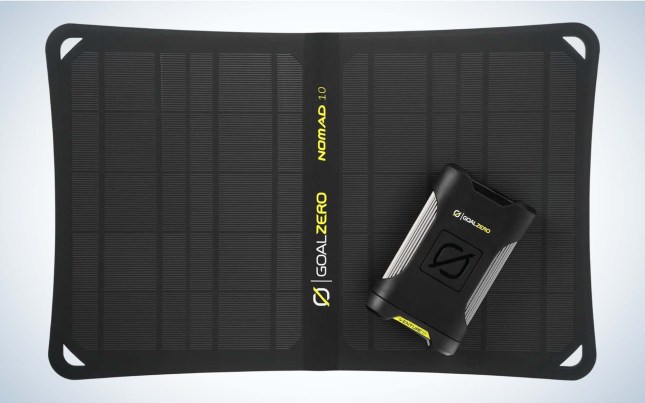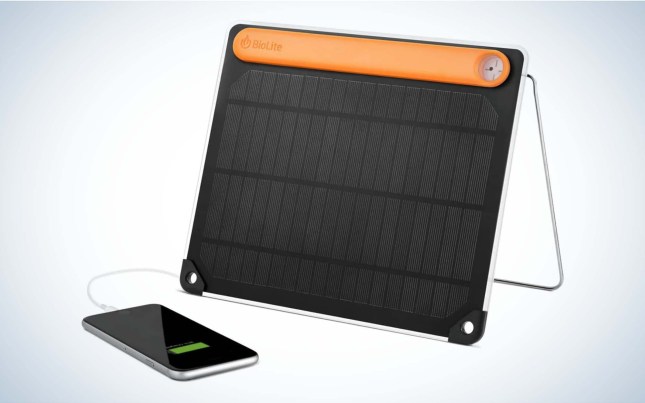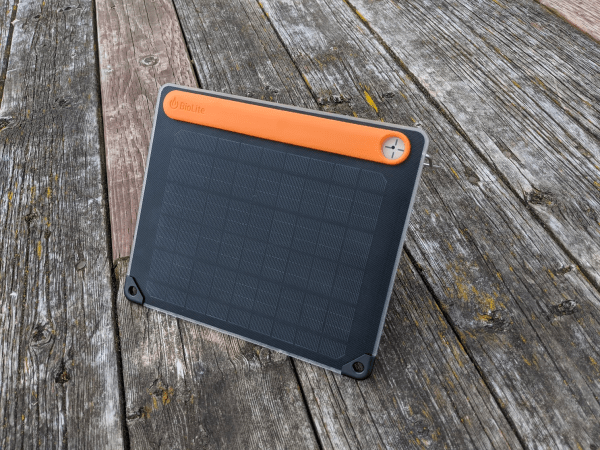We may earn revenue from the products available on this page and participate in affiliate programs. Learn More ›
If you’ve been looking to purchase a power bank, chances are a solar power bank has at least tempted you. And why not? Power stations and solar panels are rapidly taking over the energy landscape, from electric cars to energy-independent, single-family homes. Getting the best of both worlds, and at such a low cost, seems like a no-brainer. But there’s a catch: solar power banks basically don’t work. They are OK as far as power banks go, but that solar component is, in the vast majority of cases, effectively worthless. Usually I post multiple products, to give readers as many worthwhile options as I think there are to make the right choice for their needs. But this time, there is only one worth spending your hard-earned money on:
- Best Solar Panel Bank: BioLite SolarPanel 5+
If you’re less committed to having a true all-in-one option, but still with the lightweight and small packed size, here is a combo kit you can pick up that will get the job done:
- Best Combo Kit: Goal Zero Venture 35 + Nomad 10 Kit
Why Most Solar Power Banks Fall Short in Testing
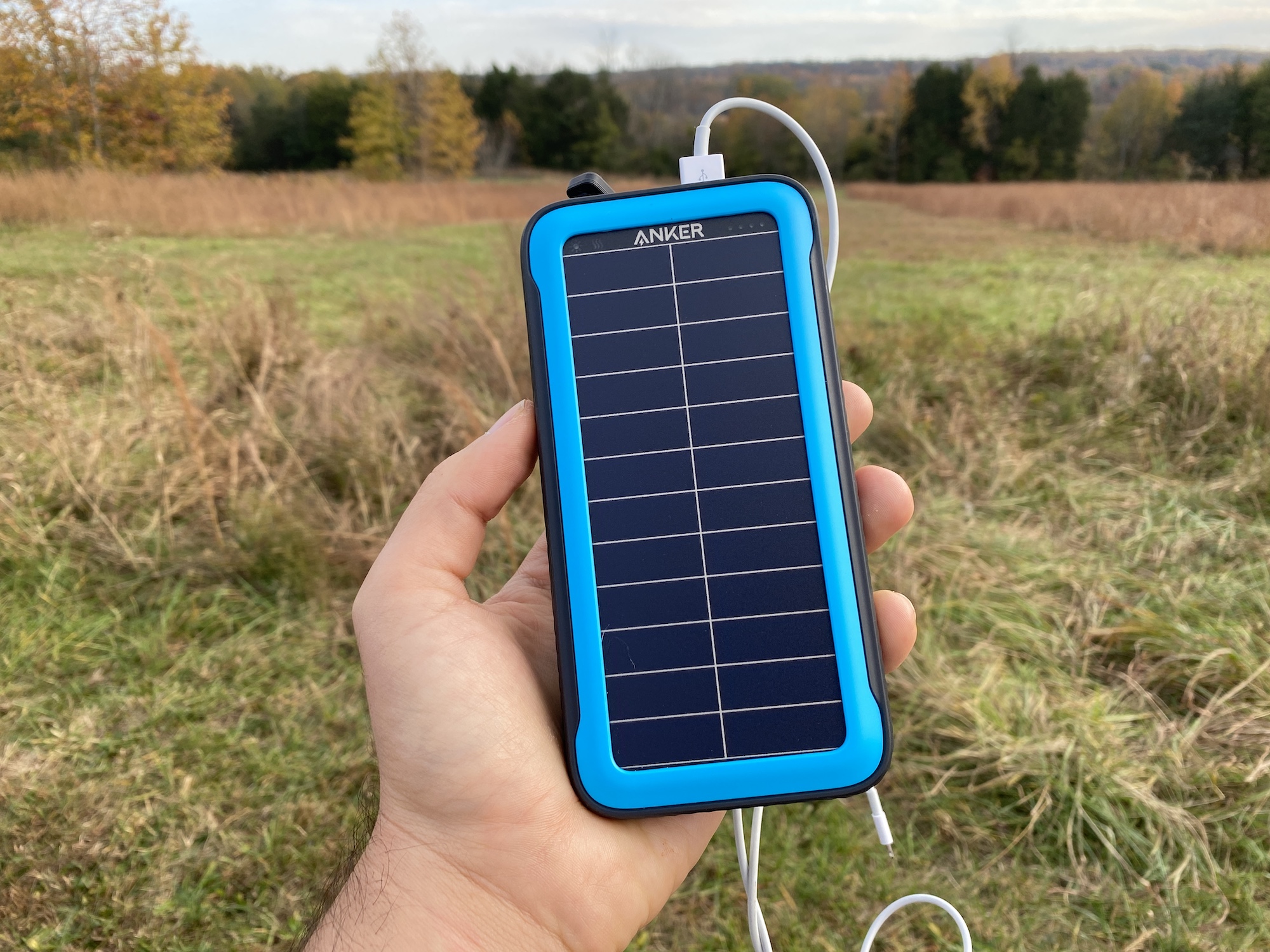
There are an almost endless number of quality power banks on the market today. And the number of quality portable solar panels is similarly increasing. So it’s no surprise that someone wondered, what if we slapped them together into a single package? And thus we got solar power banks. Even if you aren’t specifically searching for a solar power bank, you’ve likely run across one of them while searching for a regular power bank.
Anyone who understands how solar panels work and how power banks work will immediately be able to spot the problem with combining them. That’s not me, and I had to learn that lesson the hard way through testing. But let’s start with the practical application of trying to charge a 20,000mAh power bank with a 2.5-inch by 5-inch strip of solar cells.
Solar Power Banks by the Numbers
One of the smallest portable solar panels on the market is the Goal Zero Nomad 10. This panel is 9.5 inches by 15 inches, over ten times the size of what you’re getting on a solar power bank. It’s capable of moving 7.5 watts at 1.5 ampere (A). Multiply this by 1,000, and you get 1,500 mA. If you have a 10,000mAh power bank, it would take 7 hours to charge. And this assumes clear skies and that your solar panel is optimally angled toward the sun. So a panel a tenth that size would take approximately 70 hours to recharge. And again, that’s 70 hours of direct sunlight, so we’re talking around five days at the height of summer.
While that’s not a great performance, it would be acceptable to maintain a charge while on a week-long backpacking trip. But unfortunately, solar power banks don’t live up to that level of efficiency.
Testing Solar Power Banks
I left solar power banks from BioLite, Blavor, 4Patriots, and Hiluckey on my patio for four days to see how well they charged. None of them (except one) got past the first blue blinking dot. Even when I propped up the solar power banks at the same angle as some of the best portable solar panels, it never amounted to much. OL Gear Editor Scott Einsmann reported a similar experience after leaving the Anker PowerCore Solar 10000 (now discontinued) on the dash of his truck for an extended period of time.
So what’s going on here? Well, if you read the instruction manual for most power banks and power stations, you’ll see a warning not to leave them in the sun or in your car for extended periods. That’s because heat negatively affects battery lifespan. Lithium-ion batteries lose a little bit of charge over time (typically a couple of percentage points per month) — that’s why the manufacturers recommend that you recharge them periodically if you are storing them for a home emergency scenario. They are losing a little bit of power all the time because there is a chemical reaction inside the battery, even when it’s not in use. When the battery starts to heat up, those chemical reactions occur faster, resulting in even more energy loss. If it is too hot, they’ll start to permanently malfunction or even explode.
Now we can see the inherent contradiction preventing these devices from generating any real power. The tiny solar cells need a steady stream of direct sunlight for extended periods to produce power. But, the power bank will start to leak more and more power as it heats up.
However, one exception is the BioLite SolarPanel 5+. It’s a combined solar panel and battery pack that impressed me during testing.
The Best Solar Power Bank: BioLite SolarPanel 5+
Key Features
- Max power output: 5W
- Weight: 13.8 ounces
- Ports: USB-A
- Also available in SolarPanel 10+
- Warranty: One year
Pros
- 8Wh battery is integrated into the panel
- Affordable
- Small and lightweight
- Integrated sundial and adjustable kickstand
Cons
- Slow charging time
- Performs poorly in even slightly cloudy weather
The BioLite SolarPanel 5+ is the one integrated lithium-ion battery and solar panel combo that actually works. That’s because, unlike its more performative counterparts, it prioritizes the solar panel over the battery. It has a tiny battery connected to a comparatively giant solar panel, and that’s the ratio that you need for this idea to function. If you’re looking for a solar power bank as a home emergency backup to keep your phone running when the grid goes down, this is what you want.
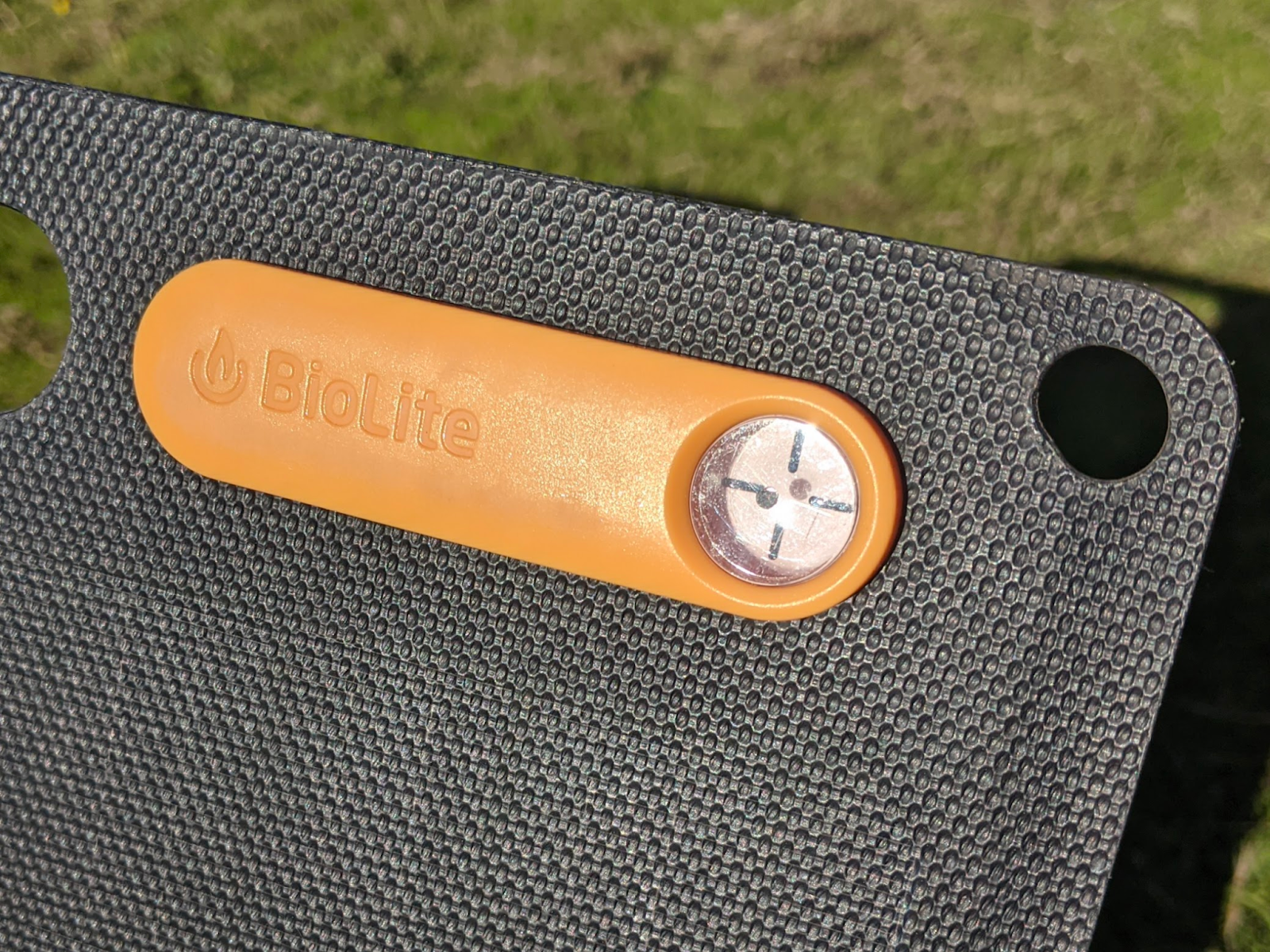
Laura Lancaster
During my initial test of the BioLite, what struck me most was how easy it was to maximize the power input. Not only is the kickstand leg easy to use, but it also incorporates a sundial. This is an essential feature for getting the most out of your solar panel. In my testing of the best solar generators, I’ve seen up to 30 percent jumps in power generation by adjusting what had been my best guess of the sun’s direction to what the sundial was indicating I should use.
I’ve since tested out leaving the battery in storage for months at a time to see if it held enough of a charge to power up a phone without additional solar input: no problem here. My husband then started taking it with him to the office every day. He leaves it in the window for eight hours, then uses whatever is in there to power up his phone on the way home. Even on the dreariest winter days in Seattle, he can get his phone charged about halfway using this method.
Best Solar Panel and Power Bank Combo Kit: Goal Zero Venture 35 + Nomad 10 Kit
Key Features
- Max power output: 18W from the USB-C port
- Weight: 1.7 pounds (0.6 pounds for the Venture 35 and 1.1 pounds for the Nomad 10)
- Ports: One USB-C, two USB-A
- Warranty: Two years
Pros
- Lightweight
- Low profile
- Fits in your glovebox
Cons
- Needs the better part of a day to fully charge via sun
- Solar panel only supports USB-A
For most people, in almost every situation, it’s fine to use a standard power bank. But if you’re really intent on having backup solar for your power bank, then a smart option is to purchase a separate solar panel to pair with your power bank. Then, you can use the solar panel itself as shade for your power bank as it charges, helping to extend its battery life.
I like this option from Goal Zero because the whole kit is small enough to fit into your glove box and light enough to take on a short backpacking trip. The power bank itself holds 9,600mAh, which is enough to power up your smartphone multiple times, while the solar panel can generate up to 7.5W at a time.
I’ve tested this combination at home to see how it did, and the Nomad 10 was able to bring the power bank up to a full charge in one day of full sun.
Things to Consider Before Purchasing a Solar Power Bank
Planned Use
Power banks are becoming increasingly common for everything from off-grid use to home emergencies to simply having a backup power source on the go. If you’re looking for a power source to use on the go, you can simply snag one of the best power banks. If you’re looking for something small and portable to take backpacking, you’d be better off with one of the best power banks for backpacking. If having something on hand for home emergencies is what you’re after, the BioLite SolarPanel 5+ is an excellent choice.
Price
If you don’t plan to subject your power bank to any particular abuse (think heat or moisture) then you can save your pennies and purchase a relatively inexpensive version. In testing, I’ve found that these work as well as brand name versions for most purposes — just don’t expect to get the same level of customer service.
Compatible Solar Panels
If you purchase one of the best power banks for camping, you can turn it into one of the best solar power banks by adding on a compatible solar panel. Look for one that has a USB-C port, as these will be compatible with most power banks. Typically, solar panels that are in the 100W to 200W range will not be compatible with power banks, as they produce more electricity than the power banks are able to absorb.
FAQs
Typically solar power banks are reasonably good power banks but very poor solar panels.
Portable solar panels can produce a surprising amount of power. Most vehicles can easily fit a 100W or even 200W solar panel without it interfering with the rest of your camping or hunting setup. 400W panels, however, are where space limitations start to arise. Smaller solar panels, such as those that can fit into one of the best backpacking backpacks or the glove box of their car, are typically in the 5W to 50W range.
The correct size battery bank for your solar setup largely depends on your power needs and space/weight requirements. There are two ways to measure your power needs. You can either look at the watt hour usage of your device and multiply that by the expected time you’ll be using it. Or you can simply run everything you want to run for as long as you’d want to run it for and measure it that way. A device like a Kill a Watt can help you measure how much power an individual device is using.
Read Next: Best Solar Panels for Camping
Final Thoughts
Power banks and portable solar panels are improving in leaps and bounds. While the limited capabilities of solar cells to produce noticeable power in sub-optimum conditions (and the loss of power in the banks themselves when they heat up) are currently limiting factors in the quest for an all-in-one solar power bank, there is reason to be hopeful that this tech will improve in the coming years. Solar, in particular, is on the cusp of important change in coming years, as solar companies look to tap into ambient light, which could result in solar panels capable of producing noticeable amounts of power, even on cloudy days or inside your home. Once solar power banks have this kind of tech strapped to their backs, we’ll likely see solar power banks do what we want them to do: produce an endless stream of power for our handheld devices.

